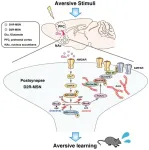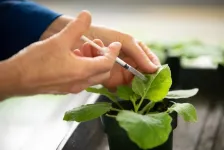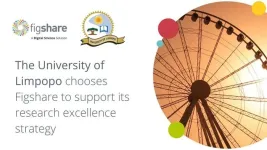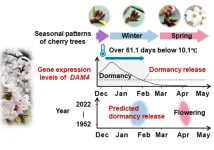(Press-News.org) COLUMBUS, Ohio – For the first time, scientists are able to directly compare the different kinds of injury that mechanical ventilation causes to cells in the lungs.
In a new study, using a ventilator-on-a-chip model developed at The Ohio State University, researchers found that shear stress from the collapse and reopening of the air sacs is the most injurious type of damage.
This miniature “organ-on-a-chip” model simulates not only lung injury during mechanical ventilation, but also repair and recovery, in human-derived cells in real time, said co-lead author Samir Ghadiali, PhD, professor and chair of biomedical engineering at Ohio State.
“The initial damage is purely physical, but the processes after that are biological in nature – and what we’re doing with this device is coupling the two,” Ghadiali said.
The team hopes the device will also help in the hunt for therapies to address ventilator-induced lung injury.
“This is an important advance in the field that will hopefully allow for a better understanding of how lung injury develops in mechanically ventilated patients and identification of therapeutic targets so that we can give drugs to prevent that kind of injury or treat it when it happens,” said co-lead author Joshua Englert, MD, associate professor of pulmonary, critical care and sleep medicine at The Ohio State University Wexner Medical Center.
The research was published recently in the journal Lab on a Chip.
Ventilators save the lives of patients with severe respiratory problems related to disease or trauma, but it has been known for a long time that the mechanical forces exerted on the lungs also cause injury. The damage at the cellular level can make the barrier between tiny air sacs and capillaries carrying blood become leaky, leading to fluid buildup that interferes with oxygen getting to the lungs.
Of particular value is the ventilator-on-a chip’s measurement of real-time changes to cells that affect the integrity of that barrier, enabled by an innovative approach: growing human lung cells on a synthetic nanofiber membrane mimicking the complex lung matrix. It’s closer to the authentic ventilated lung microenvironment than any similar lung chip systems to date, the researchers say.
The device measures the effects of three types of mechanical stress on the integrity of the barrier: lung cell stretch from overinflation, increased pressure on lung cells, and cyclical collapse and reopening of air sacs.
Experiments showed that overinflation with a high volume of air and cyclic collapse and reopening of air sacs both led the barrier to become leaky, but the cells could recover more quickly from overinflation than from the repetitive opening and closing of air sacs.
Englert said the collapse and reopening may be more problematic because it makes fluid in the lungs move, exposing cells to high amounts of shear stress.
“There really hasn’t been a lot of data that could allow for the comparison of those two injurious forces in the same system,” he said. “But now for the first time, we can use the same device with the same cells and induce both types of injury and see what happens. Our data suggests neither one of them is good, they’re both injurious, but that the collapse and reopening seems to be more severe and makes recovery harder.”
This finding was a demonstration of the model’s sophistication, Ghadiali said.
“We knew for a long time that collapse and reopening is a pretty injurious force, but we never could measure it in real time,” he said. “Now that we know that collapse and reopening injury happens much quicker and takes a long time to recover, we plan to use the ventilator on a chip to figure out how to prevent this injury and/or enhance the repair.”
Next steps involve modeling diseases such as pneumonia and traumatic injuries experienced by ICU patients in combination with mechanical action.
“We’re in the early stages of developing some of those models, diving a little bit deeper into the complexity of lung injury in ICU patients,” Englert said. “This model is a platform we can build upon.”
Ghadiali and Englert, also investigators in Ohio State’s Davis Heart and Lung Research Institute, credited first author Basia Gabela-Zuniga, who recently received her PhD in biomedical engineering, with getting the project over the finish line, and acknowledged the contributions of College of Engineering co-authors Heather Powell and Natalia Higuita-Castro. Additional co-authors were Vasudha Shukla and Christopher Bobba of Ohio State.
This work was supported by the National Institutes of Health and the U.S. Department of Defense.
#
Contacts:
Samir Ghadiali, Ghadiali.1@osu.edu
Joshua Englert, Joshua.Englert@osumc.edu
Written by Emily Caldwell, Caldwell.151@osu.edu; 614-292-8152
END
Enrollment of low-income, undocumented students declined by half at University of California and California State University campuses from 2016 through the 2022-23 academic year, according to a new study by the University of California Civil Rights Project at UCLA and UC Davis School of Law.
The paper, “‘California Dreamin’: DACA’s Decline and Undocumented College Student Enrollment in the Golden State” is believed to be the first to report on data collected during an era marked by increasing limitations on DACA, or Deferred Action for Childhood Arrivals.
Further, researchers found, for UC and CSU low-income undocumented ...
One of the things that makes brains so incredibly difficult to understand is their ability to adjust and adapt. Our learning experiences can set off complex signaling cascades that reshape neurons—and their synaptic connections—at the cellular level. For example, in mammals, scientists have established that activation of the N-methyl-D-aspartate receptor (NMDAR) and the ensuing calcium ion (Ca2+)-dependent signaling cascade is essential for postsynaptic remodeling and learning. As one might reasonably expect, ...
Samarium (Sm), a rare earth metal, is important to organic chemists because of the ability of its divalent compounds to efficiently perform single-electron transfer reductions. Samarium iodide (SmI2) is moderately stable and can operate under mild conditions at room temperature, making it highly useful for producing pharmaceuticals and biologically active materials. However, most reactions require SmI2 in quantities equal to or greater than the stoichiometric amount and necessitate the use of harmful chemicals, making the process resource-intensive and expensive to manage.
Several approaches have been studied to reduce ...
Scientists have learned how plants keep viruses from being passed to their offspring, a finding that could ensure healthier crops. The discovery could also help reduce the transmission of diseases from mothers to human children.
Plant viruses are often able to spread from one country to another through the seed trade. As a result, parent-to-progeny disease transmission is of global concern.
“Viruses can hide in seeds for years, making this one of the most important issues in agriculture,” said UC Riverside distinguished professor Shou-Wei Ding in the Department of Microbiology and Plant Pathology. Ding is corresponding author of a new paper about the ...
HOUSTON – (Sept. 19, 2024) – Rice University and Baylor College of Medicine have received $2.8 million in funding from the National Heart, Lung, and Blood Institute (NHLBI), a division of the National Institutes of Health (NIH), for research on reducing inflammation and lung damage in acute respiratory distress syndrome (ARDS) patients.
The study, titled “Cell Based Immunomodulation to Suppress Lung Inflammation and Promote Repair,” will be co-led by Omid Veiseh, a professor of bioengineering and faculty director of the Rice Biotech Launch Pad, and Ravi Kiran Ghanta, a professor of surgery at Baylor. ...
Figshare, a leading provider of institutional repository infrastructure that supports open research, is pleased to announce that the University of Limpopo has chosen Figshare to facilitate the collection, management, sharing and preservation of its research data.
The University of Limpopo – one of the top public universities in South Africa offering undergraduate and postgraduate qualifications, and a variety of short learning programmes – will become the 20th institution in the country using Figshare as their data repository.
Using ...
Fukuoka, Japan – Japan in spring is famous for its cherry blossoms, or sakura, which begin flowering in the southern region of Kyushu and blaze upwards to the remote north of Hokkaido. The most abundant cherry tree cultivar, Somei Yoshino, is the iconic symbol of spring, as the cloned trees flower simultaneously at each site, creating a fleeting explosion of white-pink blossom that enraptures locals and tourists alike. The flowering forecasts of Somei Yoshino are poured over for months before flowering, as visitors plan their trips and locals ...
Fukuoka, Japan—Researchers have developed a new organic thermoelectric device that can harvest energy from ambient temperature. While thermoelectric devices have several uses today, hurdles still exist to their full utilization. By combining the unique abilities of organic materials, the team succeeded in developing a framework for thermoelectric power generation at room temperature without any temperature gradient. Their findings were published in the journal Nature Communications.
Thermoelectric devices, or thermoelectric ...
The superior colliculus is a midbrain region that is traditionally thought to help animals orient themselves toward important locations in space, like directing their eyes and head toward a bright flash of light. New research from the University of Chicago shows that this part of the brain also plays a role in complex cognitive tasks like visual categorization and decision making.
In the new study, published in Nature Neuroscience, scientists measured the information contained in patterns of brain cell activity across multiple brain regions involved in visual category decisions. The researchers monitored activity in the superior colliculus (SC) and part of the posterior parietal ...
Lavas from hotspots—whether erupting in Hawaii, Samoa or Iceland—likely originate from a worldwide, uniform reservoir in Earth’s mantle, according to an evaluation of volcanic hotspots published today in Nature Geoscience.
The findings indicate Earth’s mantle is far more chemically homogenous than scientists previously thought—and that lavas only acquire their unique chemical “flavours” enroute to the surface.
“The discovery literally turns our view of hotspot lavas and the mantle upside down,” said Dr. Matthijs Smit, associate professor ...






